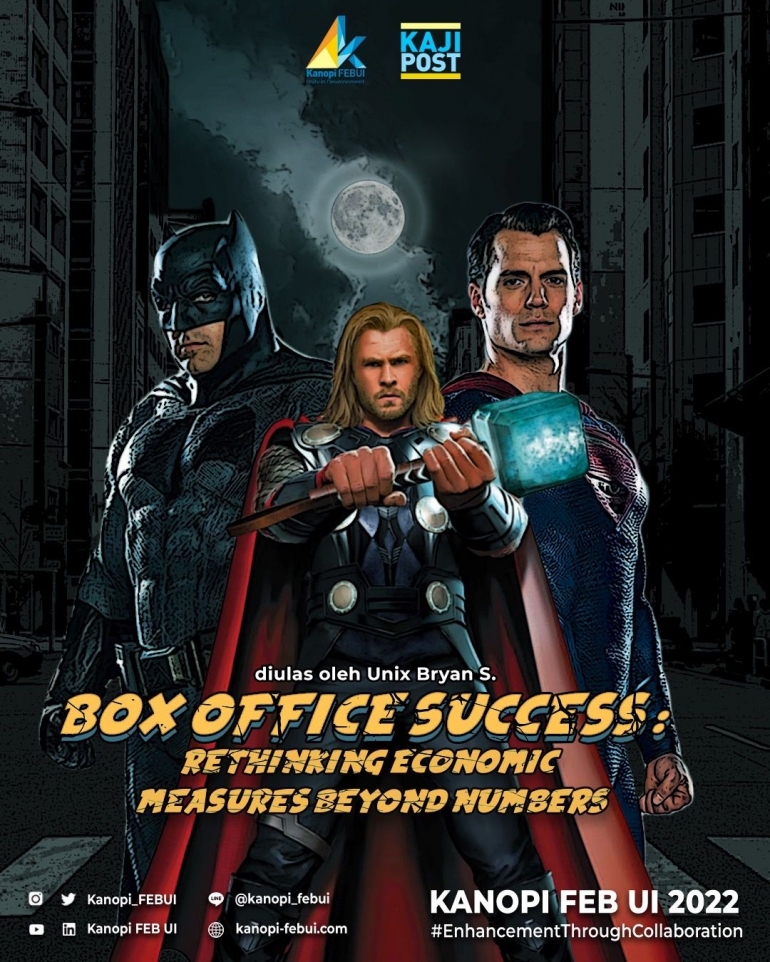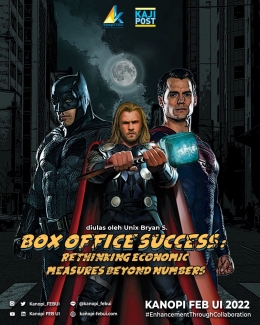Batman v Superman: Dawn of Justice smothers a potentially powerful story -- and some of America's most iconic superheroes -- in a grim whirlwind of effects-driven action
- Rotten Tomatoes Critics Consensus
Before the release of James Wan's Aquaman, Batman V Superman: Dawn of Justice reigned supreme as DC Extended Universe's highest grossing film, generating almost US$900 million dollars. This includes blockbusters such as Wonder Woman and Man of Steel. In relative terms, it does mean that Batman V Superman is one of DCEU's most successful films. But, exactly, on what terms?
The example above shows the problem that we face while discussing the film industry, which is box office success. As we know it, box office is the revenue generated by ticket sales. Box office is commonly regarded as a parameter of a film's success for two reasons. For one thing, it shows how popular a film is. Second, it may technically imply that the film is a "success," since large gross sales imply a high profit potential.
Hence why, motion picture companies like Disney and Warner Bros have the tendency to compete for the highest-grossing films, as though this is the be-all-end-all criteria that can be used to assess a film's relative success.
But while it may be a good and simple parameter to use, it doesn't reflect the true quality of the film. That is, at least from the perspective of moviegoers. For the major studios? Simply pursuing high income is not necessarily a positive thing for them, as well. In this article, we will mainly discuss how fundamental quantitative measures are not representative of a film's success, and why qualitative measures are better. Then, we will also give a real economic example of quantitative versus qualitative metrics.
The Flawed Measure of "Film Success"

The use of gross box office as a metric for film success is prevalent. The studios use it, the media utilizes it, and even regular moviegoers embrace it. So how is box office accumulated? The box office sales at theaters are recorded by the media measurement and analytic organization Rentrak. Each ticket sold and money collected at theaters throughout the world is recorded immediately to Rentrak and entered into a database.
In simple terms, gross box office is the product of the number of tickets sold multiplied by the price per ticket. This metric can be classified as quantitative data, as it refers to information that can be quantified, counted or measured, and given a numerical value. However, this quantitative measure comes with a few problems. For one, the gross box office metric does not reflect real income. In economics, we study the real and nominal values of money. The standard technique of calculating box office with the relative price at the time a film is released is inherently flawed.
For example, Avengers: Endgame has dethroned Titanic as the second highest grossing film. However, that comparison does not account for the difference in real value of dollar. Avengers: Endgame was released 22 years after Titanic. US$1 in 1997 is equivalent in purchasing power to about US$1.59 in 2019, an increase of US$0.59 over 22 years. When adjusted with real value, Titanic beats Avengers: Endgame by US$500 million, relative to the price level in 1997.









